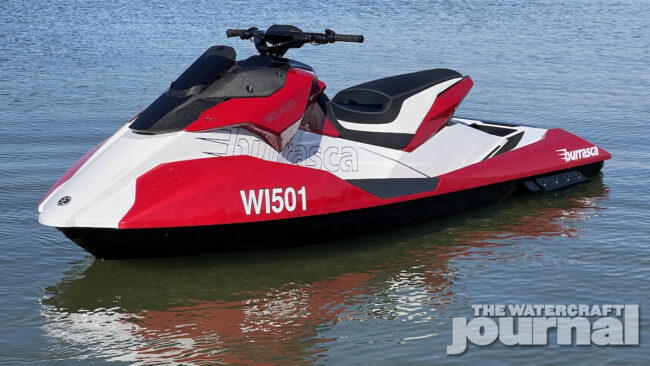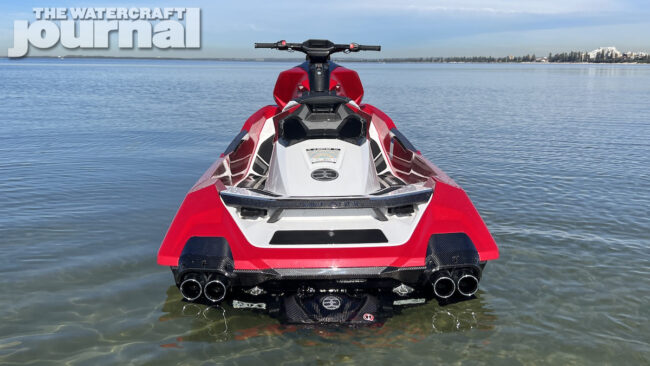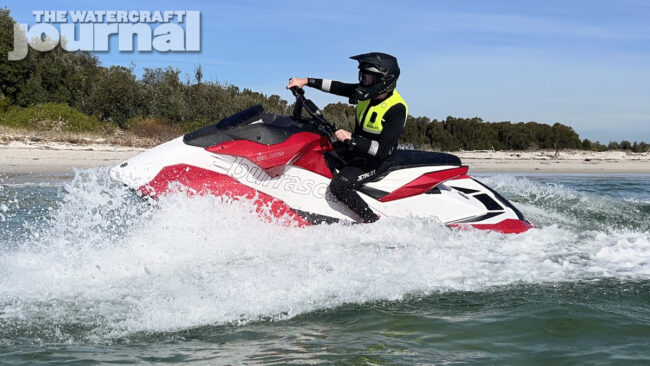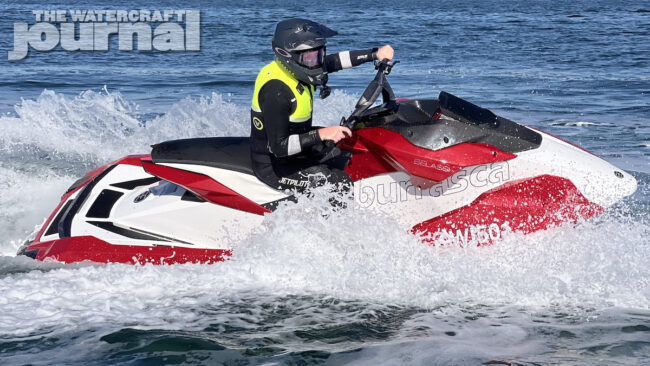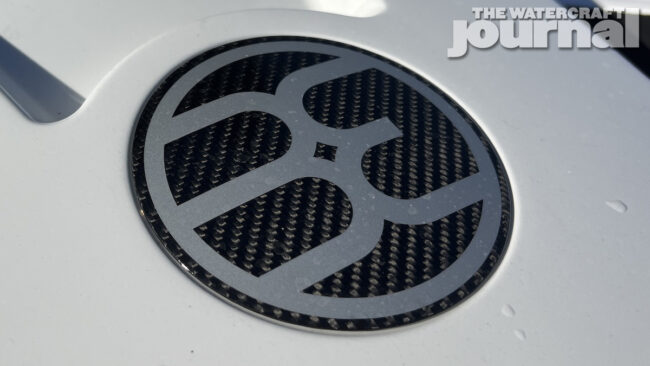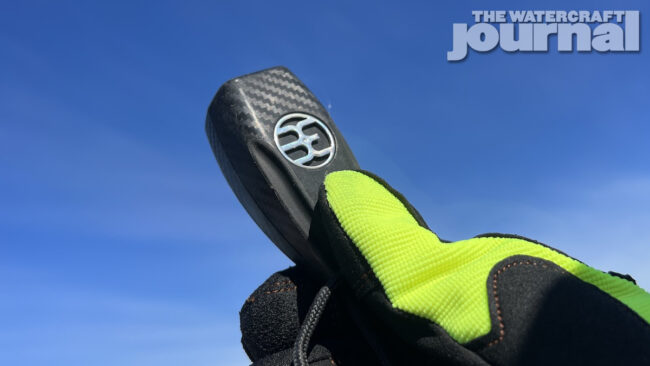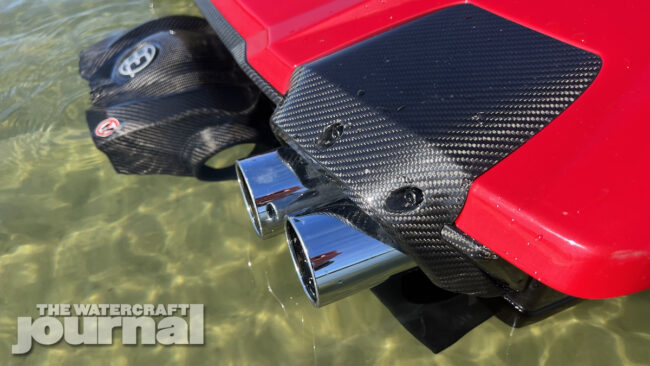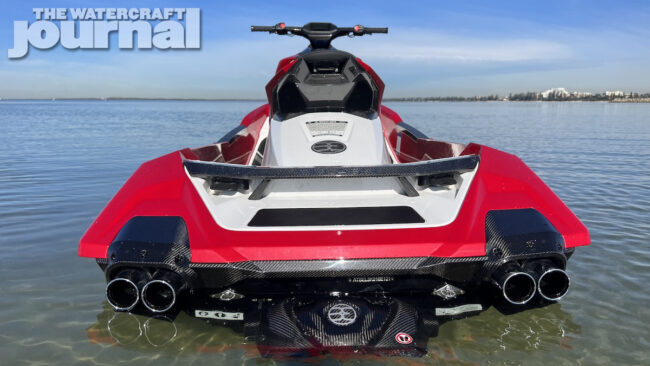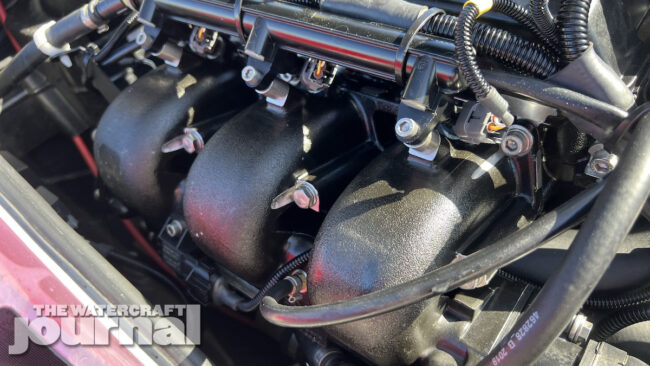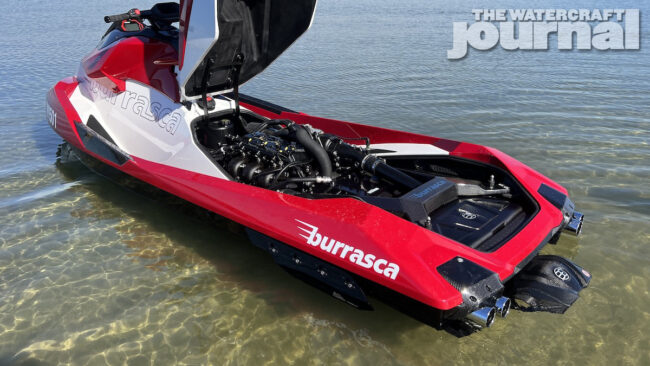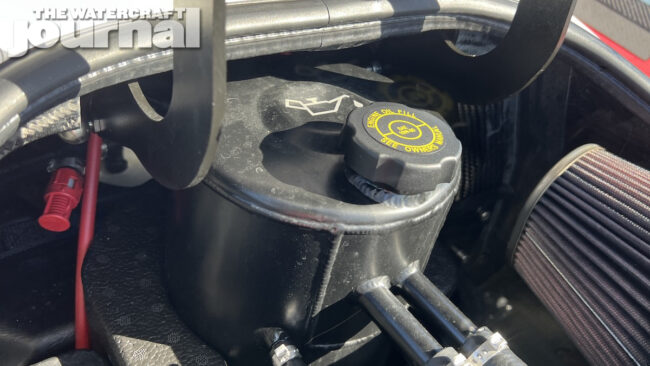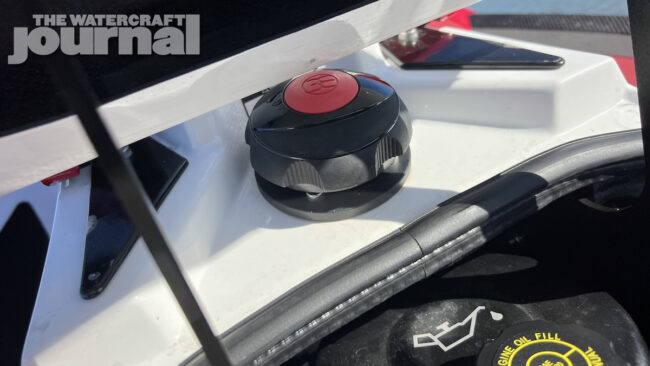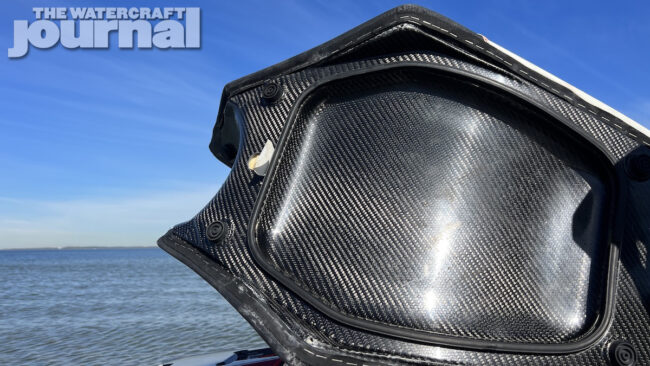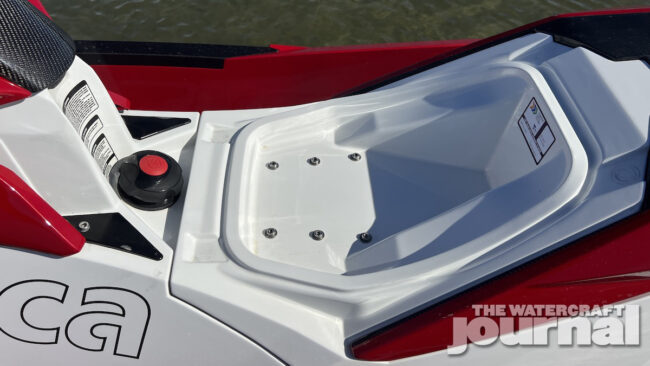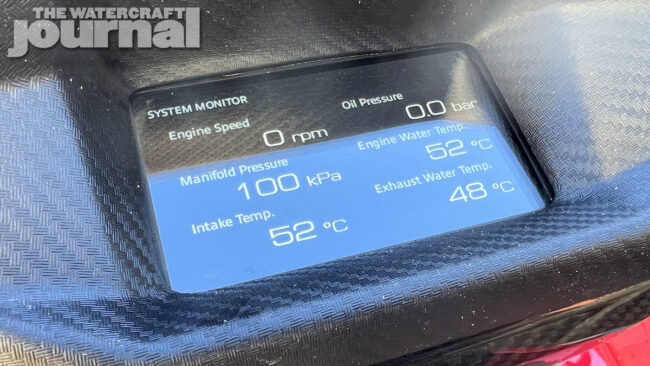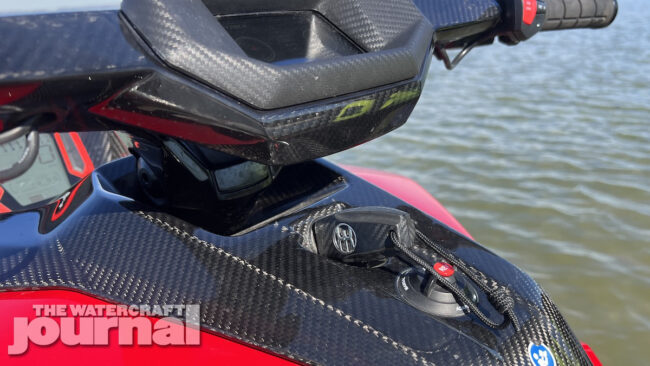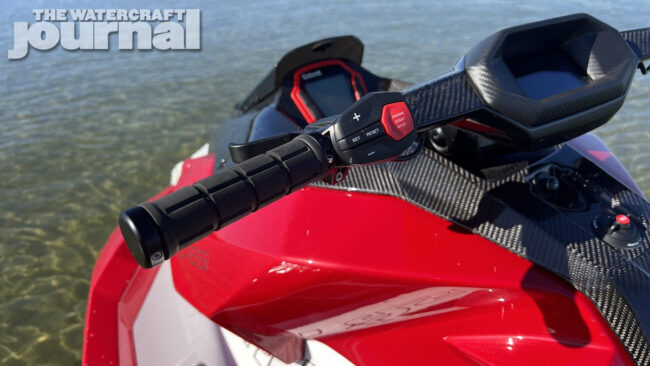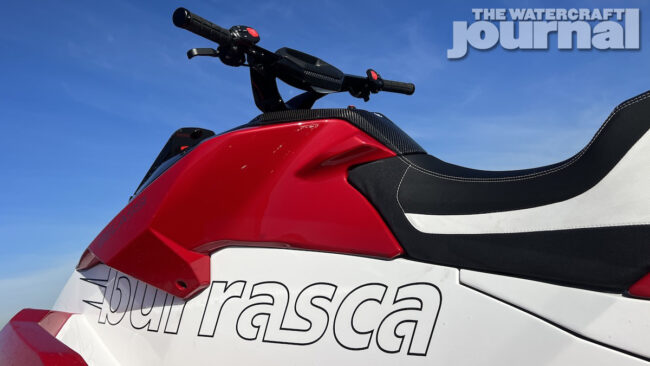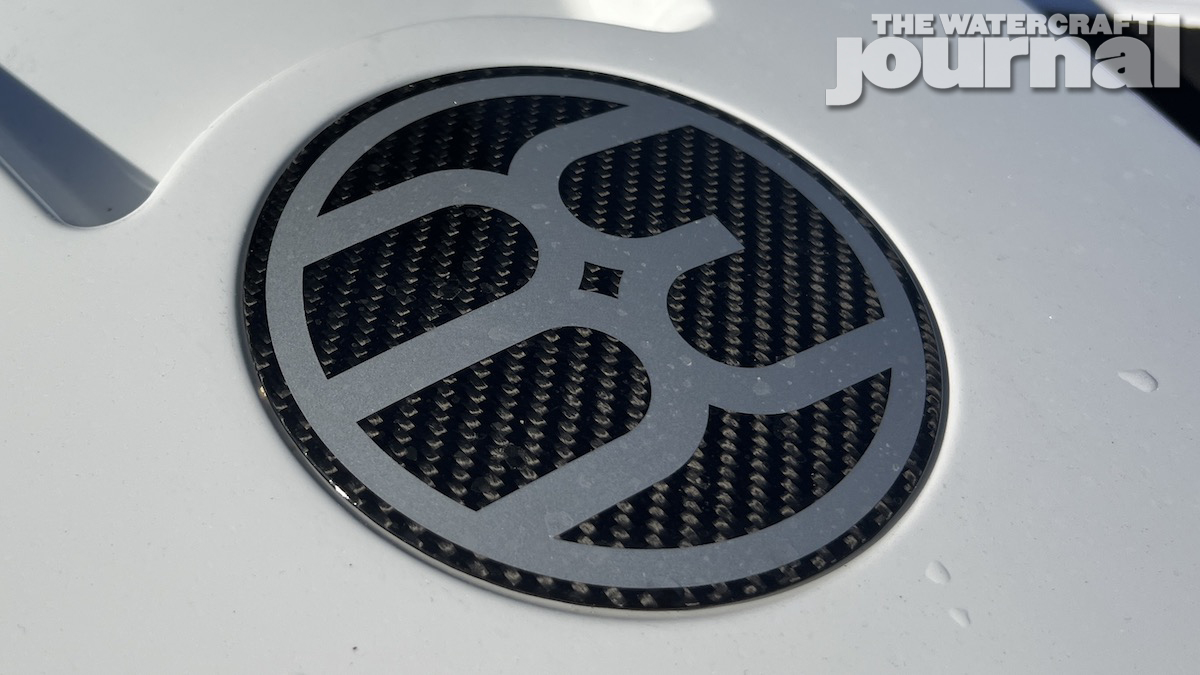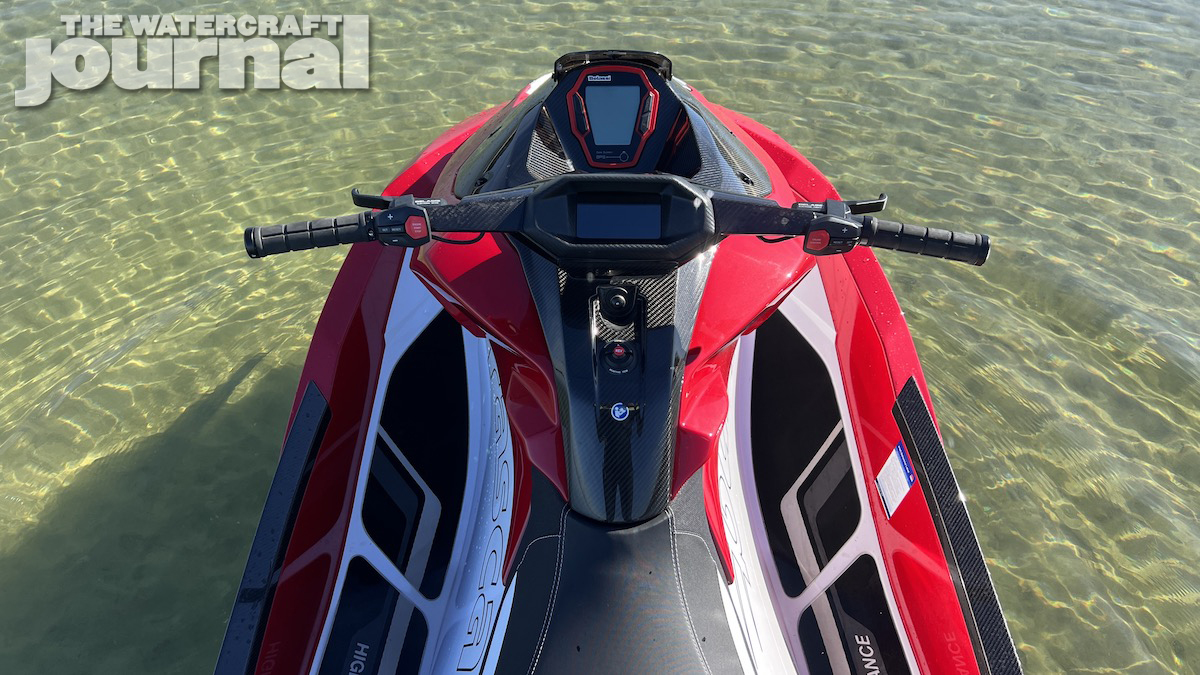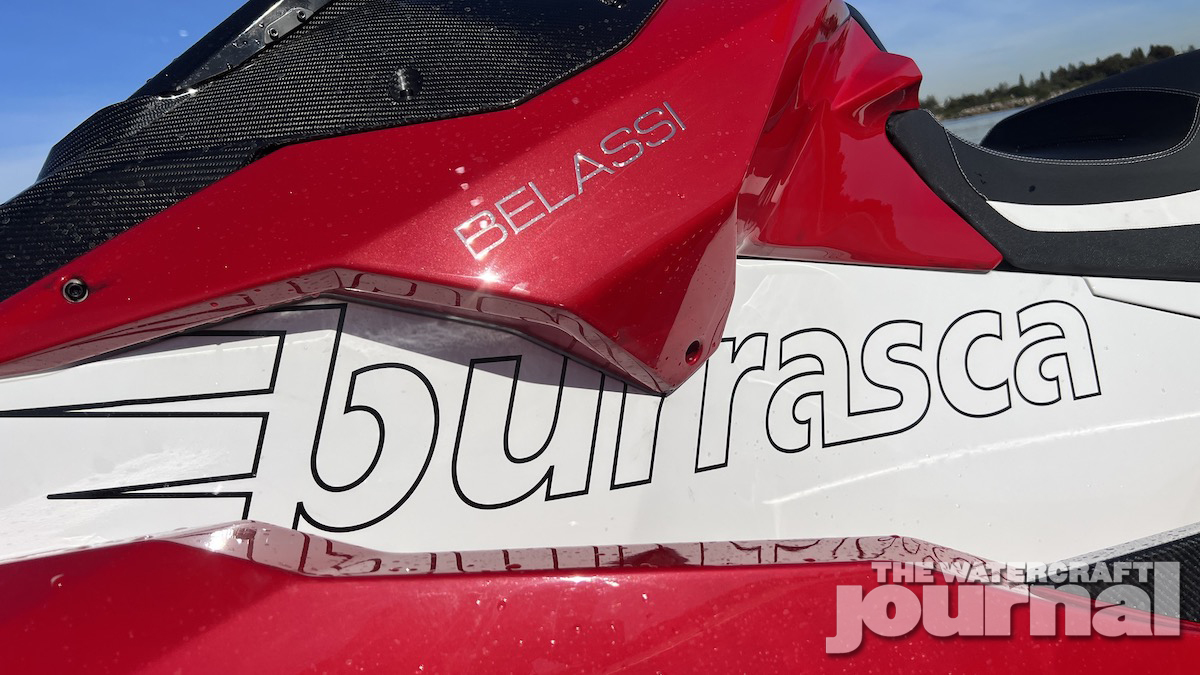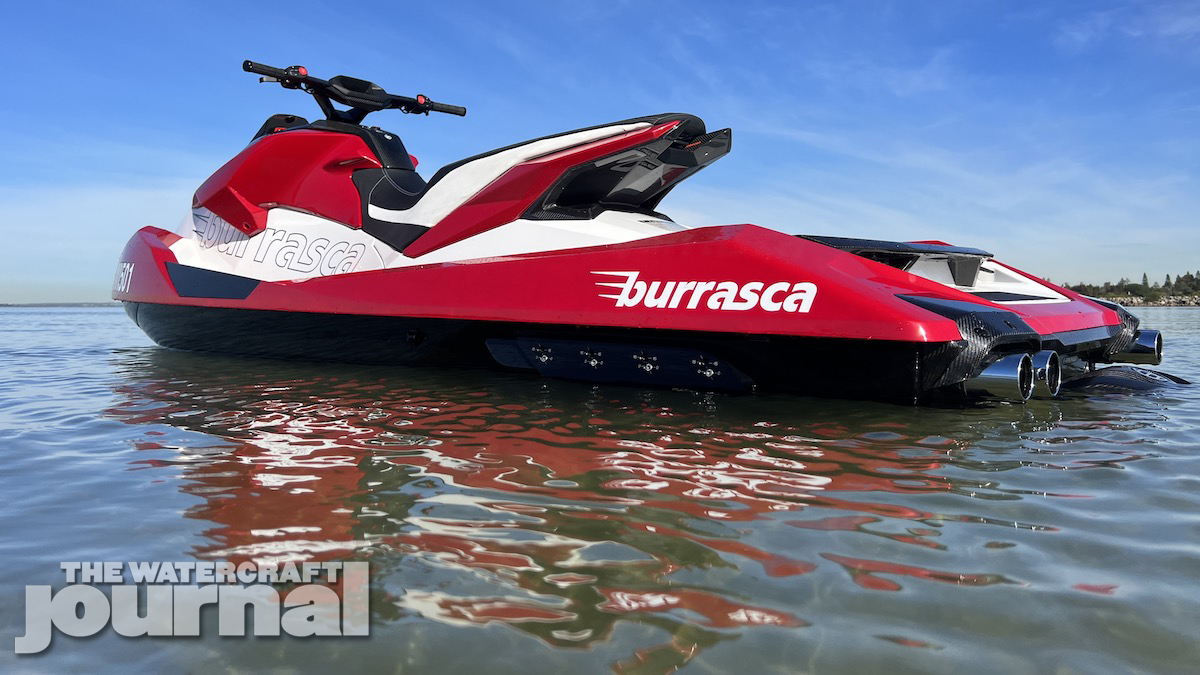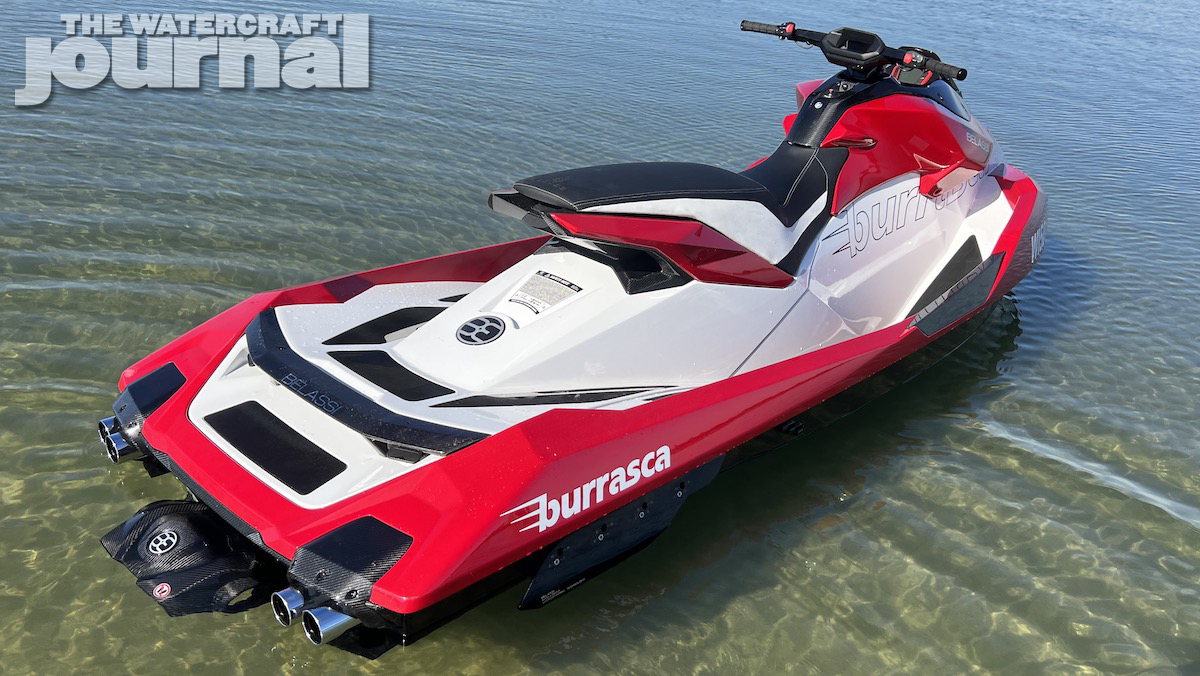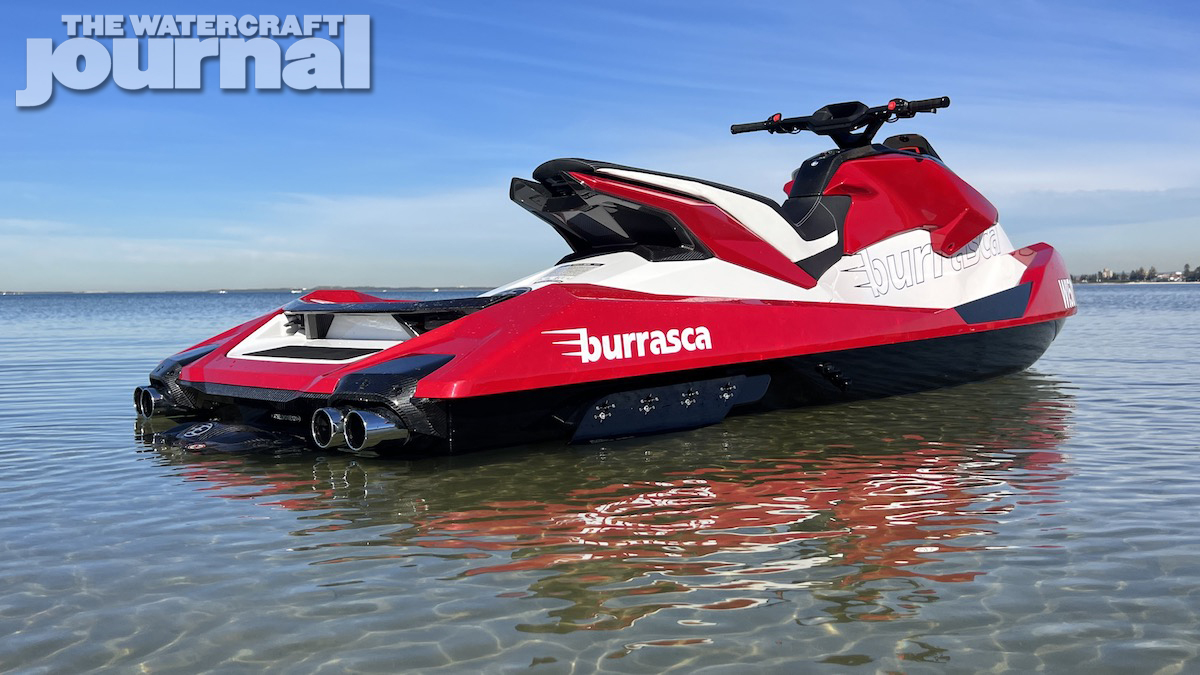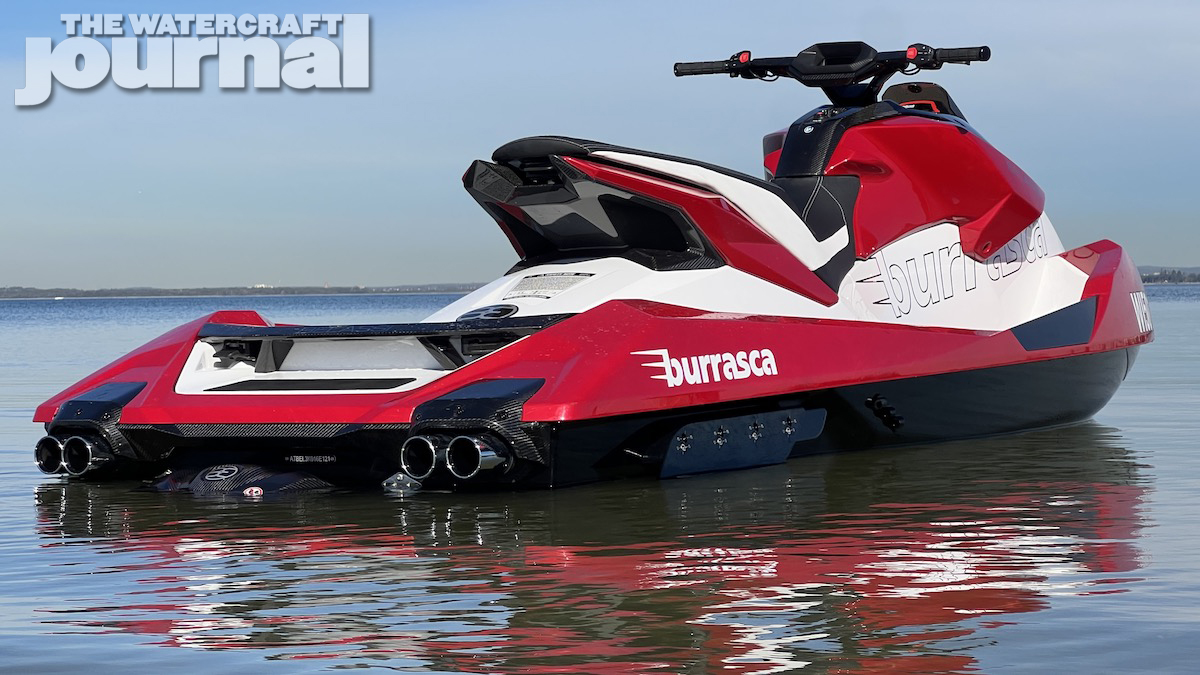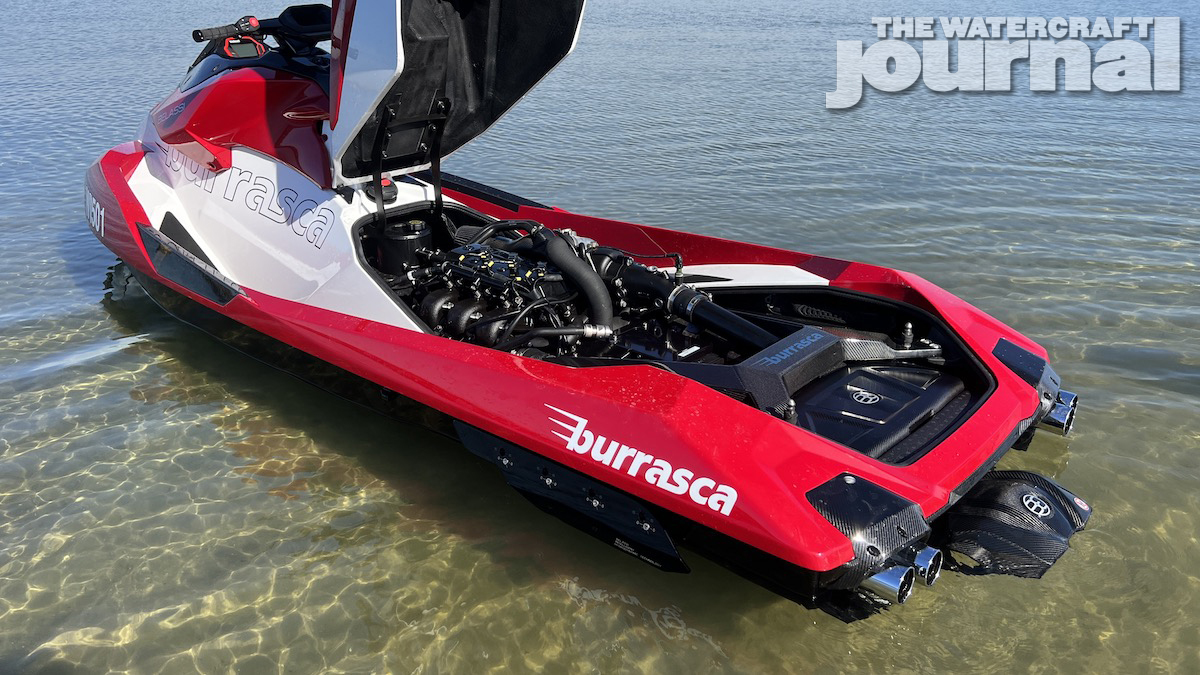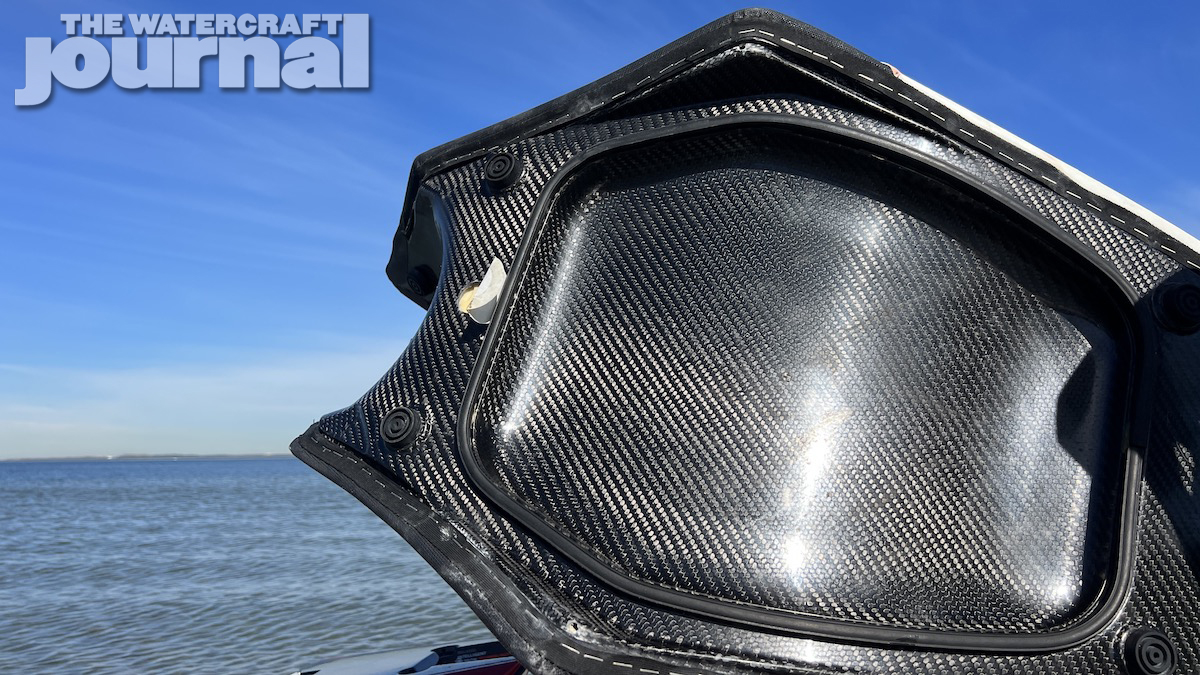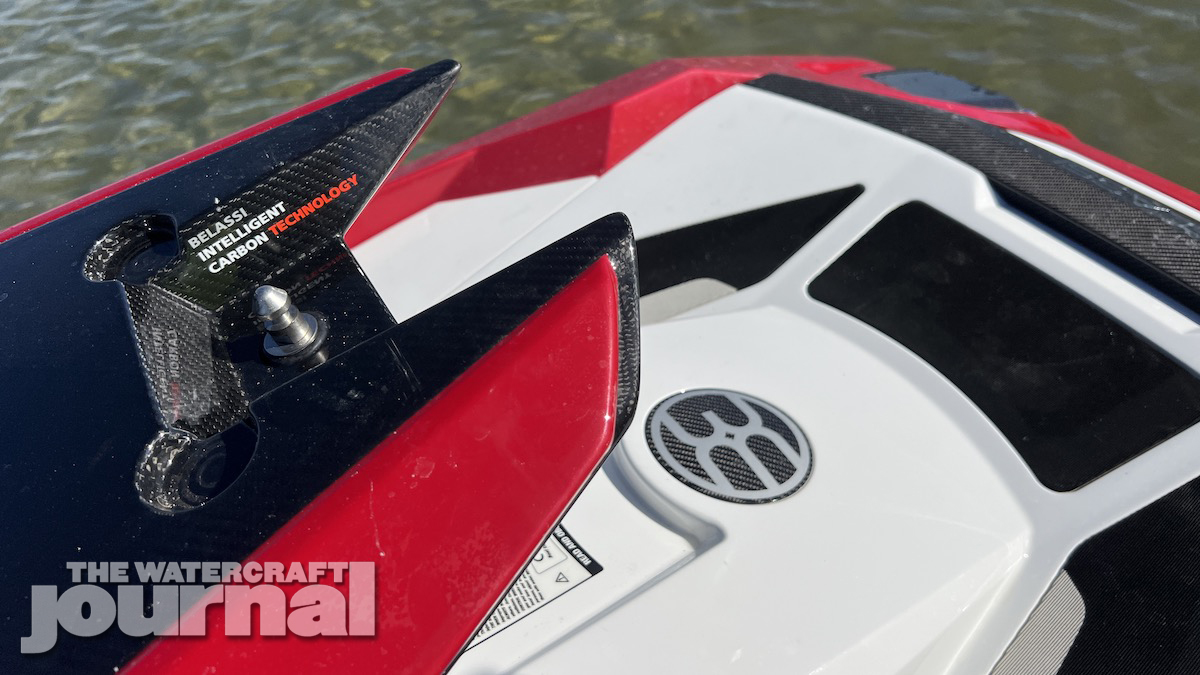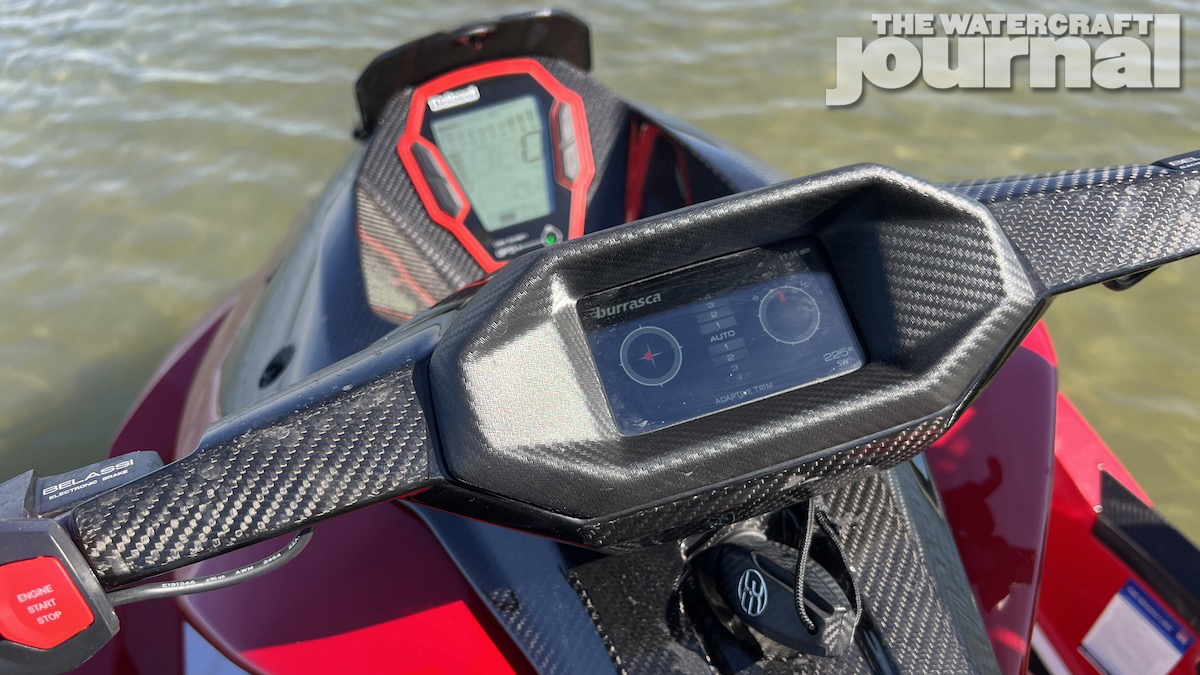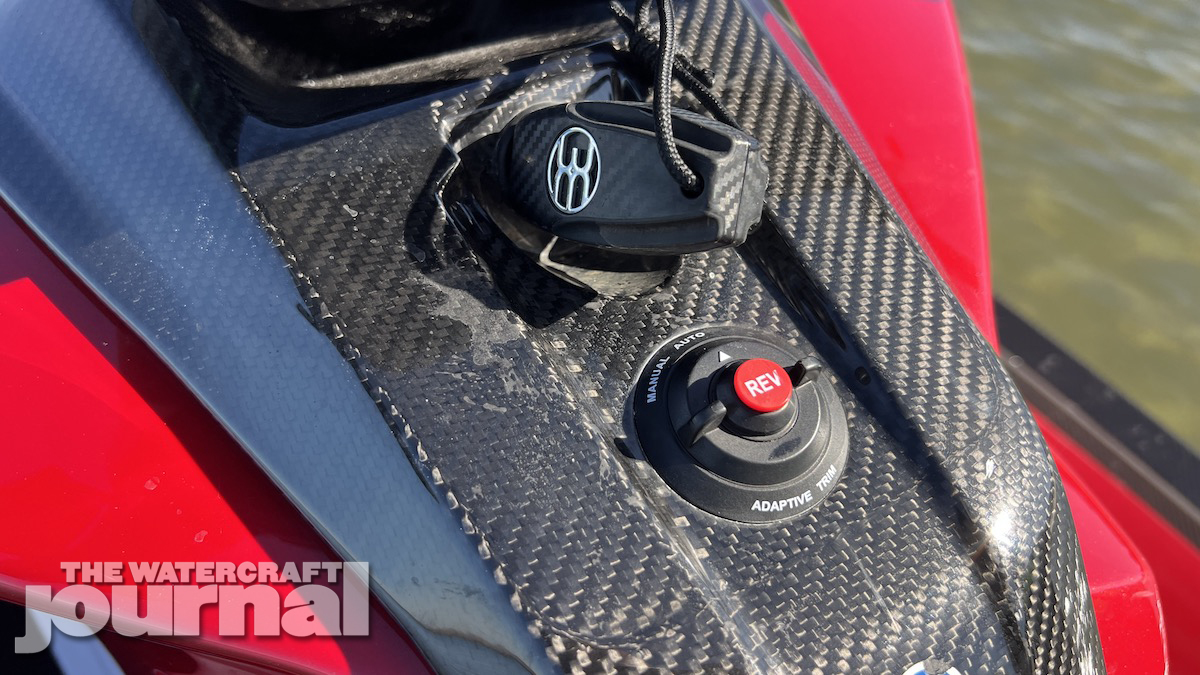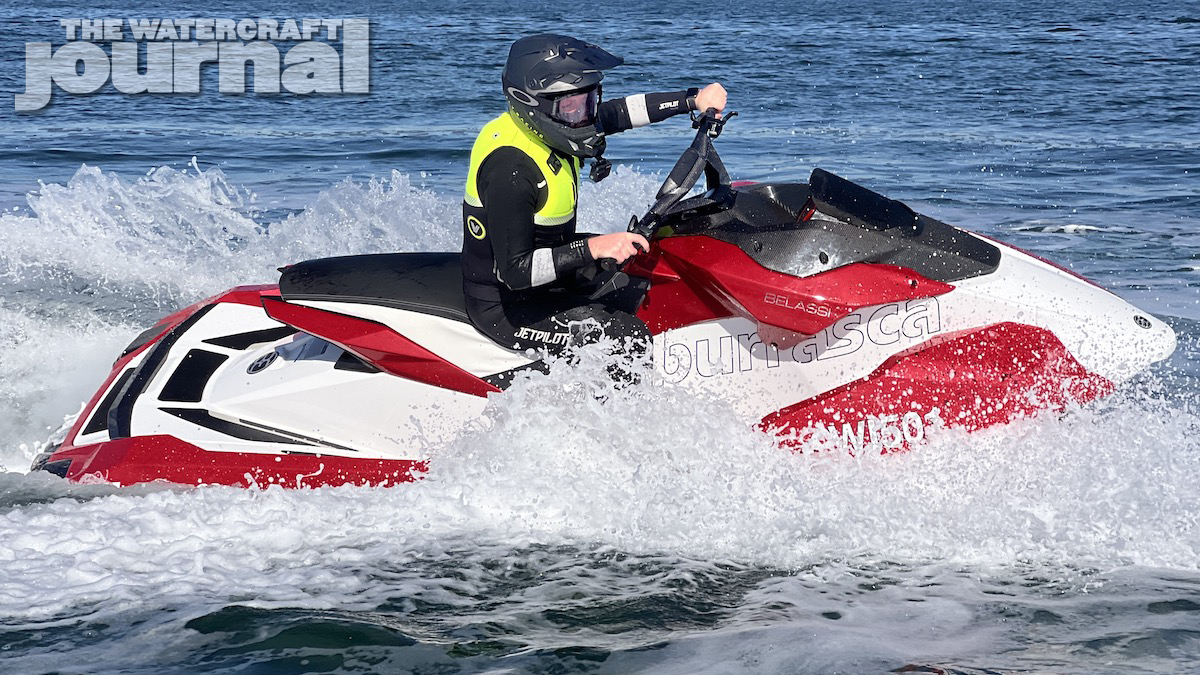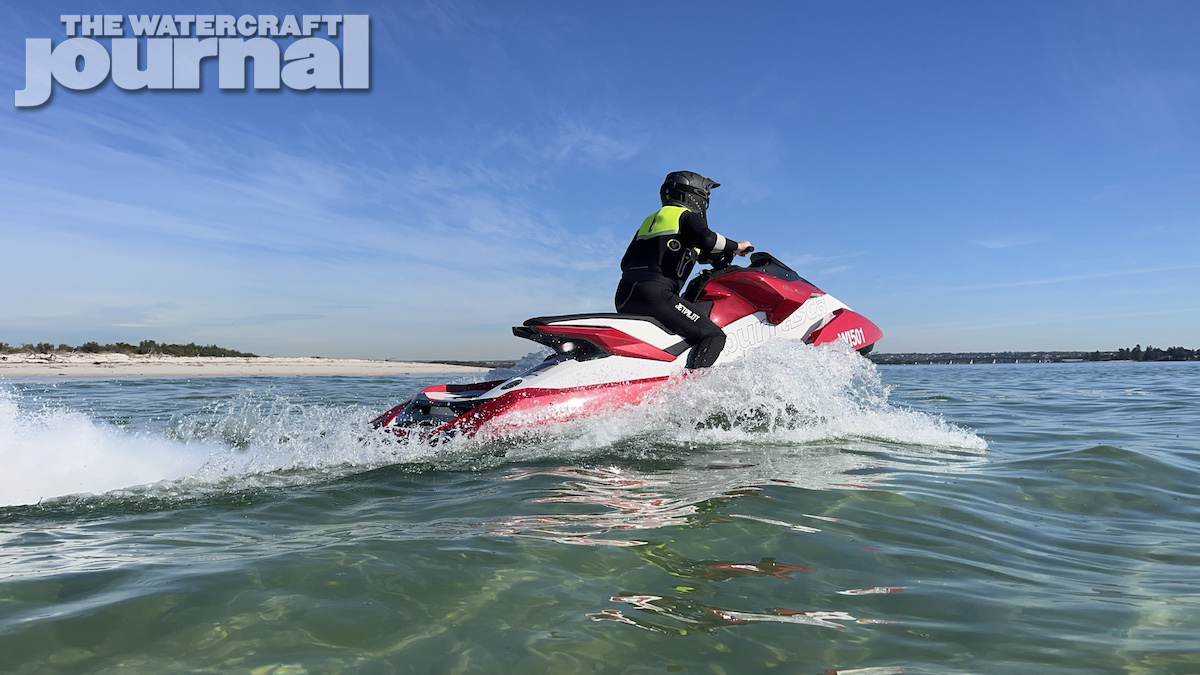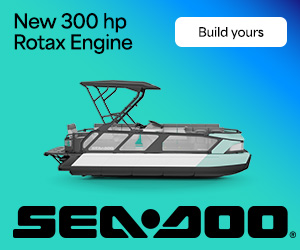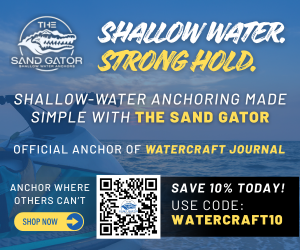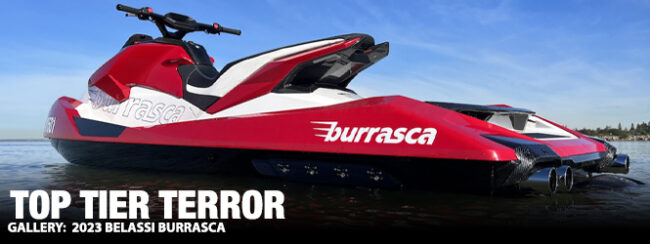
Here at The Watercraft Journal we have been following the rollout of the Belassi Burrasca from Europe since way back in 2017. As many may recall, the firm was originally called Benelli then it changed hands, got a new name and an overhaul of the craft itself. We’ve been chasing this thing down for more than five years and finally we have a taste of what it’s like. From the other side of the world.
Our mates at Watercraft Zone in Sydney, Australia were able to get on a demo from the distributor of Belassi in Australia and New Zealand. They got to spend some decent time on the craft. Although weren’t able to run fuel consumption numbers, they were able to give it a top speed run and test out the hull in a range of conditions.
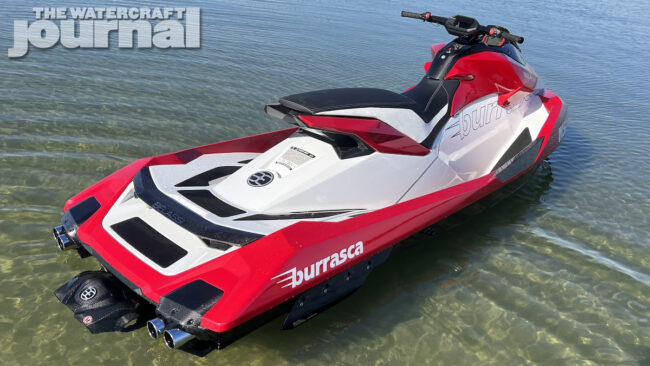
Spoiler alert! Belassi claims a top speed of 78-to-80mph. But in a VBOX test, the guys at Watercraft Zone saw a top speed of 73.9mph. To be clear this was an average of four runs, two in each direction. Which is why in one clip you can see the digital speed of the Belassi nudging 121kmh (75mph) briefly.
Also, Belassi says its top speed claim is with half a tank of fuel and a rider that weighs 176-pounds. When the guys tested it, they had a full tank of fuel and a 154lb rider. Water conditions were calm but not glassed out. So we’re not doubting Belassi’s top speed claim. We’re merely pointing out what we got.
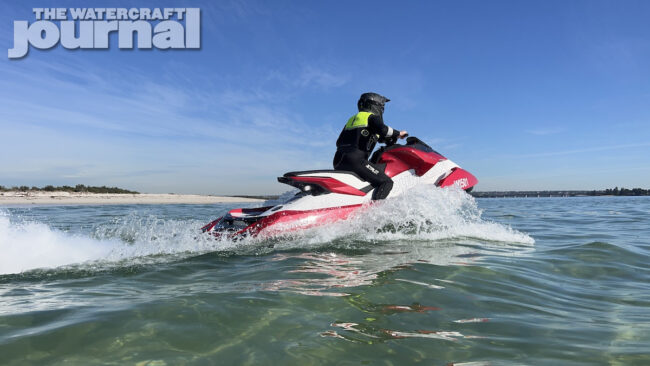
Sure you can get modified skis up to or in excess of this speed with a Riva kit and the like. But the Belassi Burrasca is not only about top speed. The guys at Watercraft Zone say it’s a bit of a weapon to ride. But before we get into it, a quick recap.
While the Belassi Burrasca has an Italian name – Burrasca is Italian for “storm” – the craft is hand-made in Austria. [That’s Austria near Germany. Not Australia near New Zealand. –Ed.]
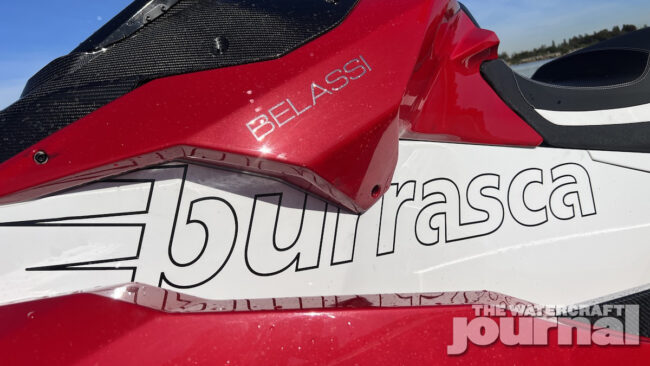
When it went on sale in Europe in mid 2021 it was priced from 50,000 Euros, the equivalent of about $56,000 US dollars. And while that is a stack of money – and more than double the price of the fastest PWC from Sea-Doo, Yamaha and Kawasaki – it’s worth noting this is a highly specialized machine.
In fact, each Belassi Burrasca is built by hand over 108 hours using more than 2000 specially crafted parts. It has a dry-sump oil management system to help the turbocharged three-cylinder engine handle high G-forces. And there is widespread use of carbon-fiber to strengthen the structure, such as the cross brace in the engine compartment, as well as carbon-fiber handle bars, a carbon-fiber muffler housing, and a carbon-fiber air intake.
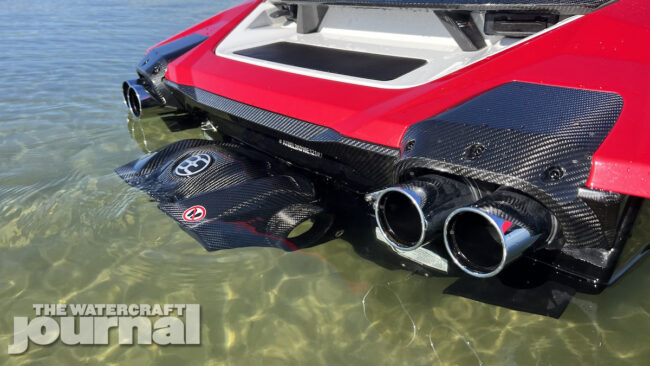
There are also carbon-fiber accents above the quad exhaust tips, and on each side of the top deck, as well as a genuine carbon-fiber seat base, and a genuine carbon-fiber reverse bucket. While there is plenty of carbon-fiber, in fact the top deck and hull are made out of an infused fiberglass composite material.
The top deck, hull and hood cover are painted by hand, which means customers can customize their ski at additional cost. The engine compartment is easy to access once the seat is removed. Then the top deck cover can be raised after releasing two tabs.
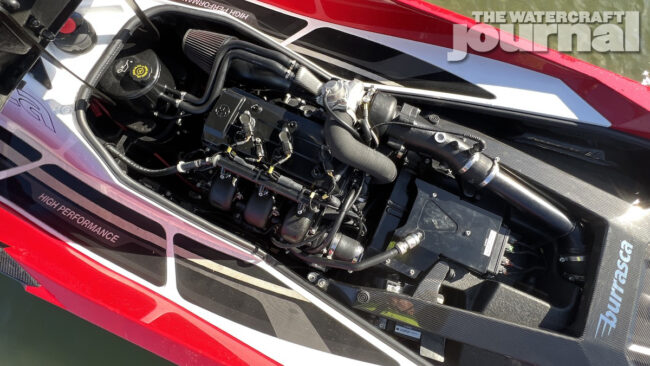
The Belassi Burrasca is powered by a 320-horsepower turbocharged 1602c three-cylinder engine; and although that’s similar to the 1630cc capacity of the Sea-Doo Rotax engine, Belassi says this is its own, unique design. To that point, the intake manifold is made of metal rather than plastic as it is on the Sea-Doo, and is on the other side of the engine compared to the Sea-Doo.
The jet pump has an internal diameter of 161mm and 14 vanes. The turbocharger uses a Mitsubishi core but the unit is custom made for Belassi to deliver zero turbo lag and deliver instant responsiveness. The fuel tank is rated at 16.9-gallons.
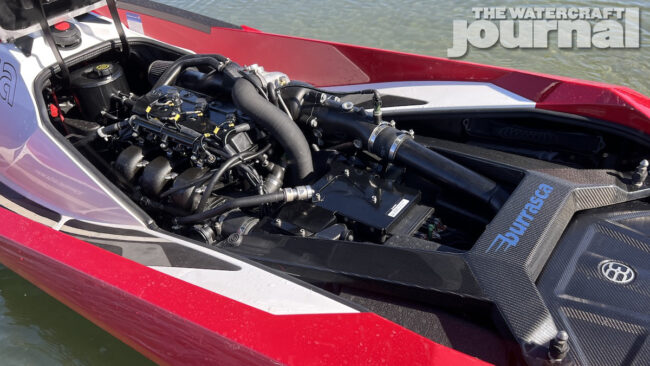
The Belassi Burrasca tips the scales at 809lb, whereas the Sea-Doo RXP-X 300 has a dry weight of 780lb – and the Yamaha GP1800R SVHO has a dry weight of 754lb. Kawasaki lists the weight of the 2023 Ultra 310LX between 1032 to 1090lb but this is with fluids versus the dry weight figures for the others.
A K&N air filter is attached to a carbon-fiber air intake. And the engine is fed oil via a gear-driven, six-stage, dry sump system, feeding into a carbon-fiber reservoir and heat extractor. The oil filter is located in a tight spot on the engine block, next to the dry sump, but is more easily accessible than the oil filter on most other jet skis.
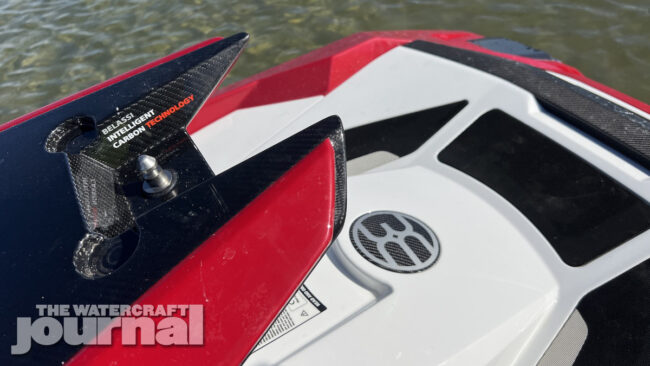
The water-injected exhaust system flows into a carbon-fiber muffler. The exhaust pipe then splits into two before exhaling via four exhaust tips – two per side. There is no carbon seal, instead the drive shaft operates in the same way as Yamaha and Kawasaki Jet Skis – via a bearing and two seals.
There are two digital display screens and a GPS speedometer. The screen in the handlebars display critical data such as oil pressure, manifold pressure, intake temperature, engine water temperature, and exhaust water temperature.
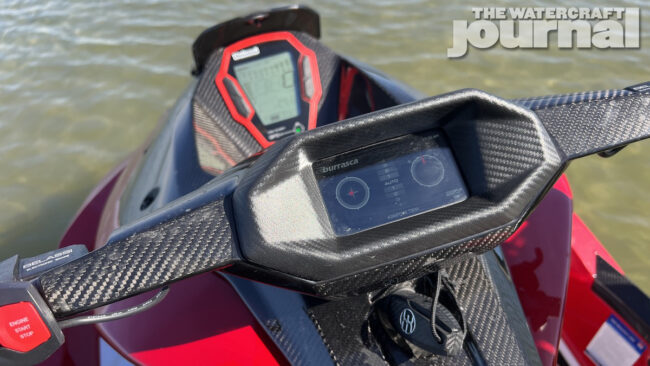
Some of the technology can be fiddly however. To change the trim on the Belassi Burrasca you press a button on the left handlebar, and then toggle up and down in the menu on the digital screen.
The handlebars are not height adjustable without resetting their position with tools; and there is no storage for a phone, wallet or car keys. There is a small wet storage area under the rider’s seat but it’s not practical to use. And reboarding the rear deck is also a bit tricky. The aluminum sponsons are adjustable. If we were to own this ski, we would soften them off.
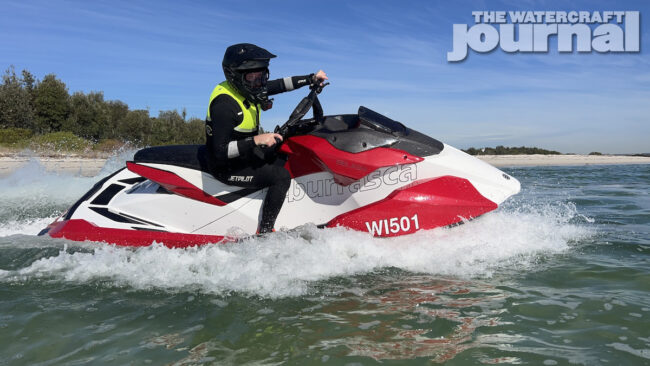
The idle speed is quite high too, about 5mph. Because the engine is mounted towards the rear slightly, the Belassi is tail heavy which pushes up the nose even before you dial in any trim. That said, the guys found the Belassi cut through chop well and felt stable at top speed.
To sum up, while most Sea-Doo, Yamaha and Kawasaki fans probably won’t queue up to buy one of these, it was still good to get an insight into a high-end European take on the personal watercraft. And the price is not just mark up. The Belassi Burrasca has serious and expensive componentry, craftsmanship and upgrades. And exclusively others can’t match.



